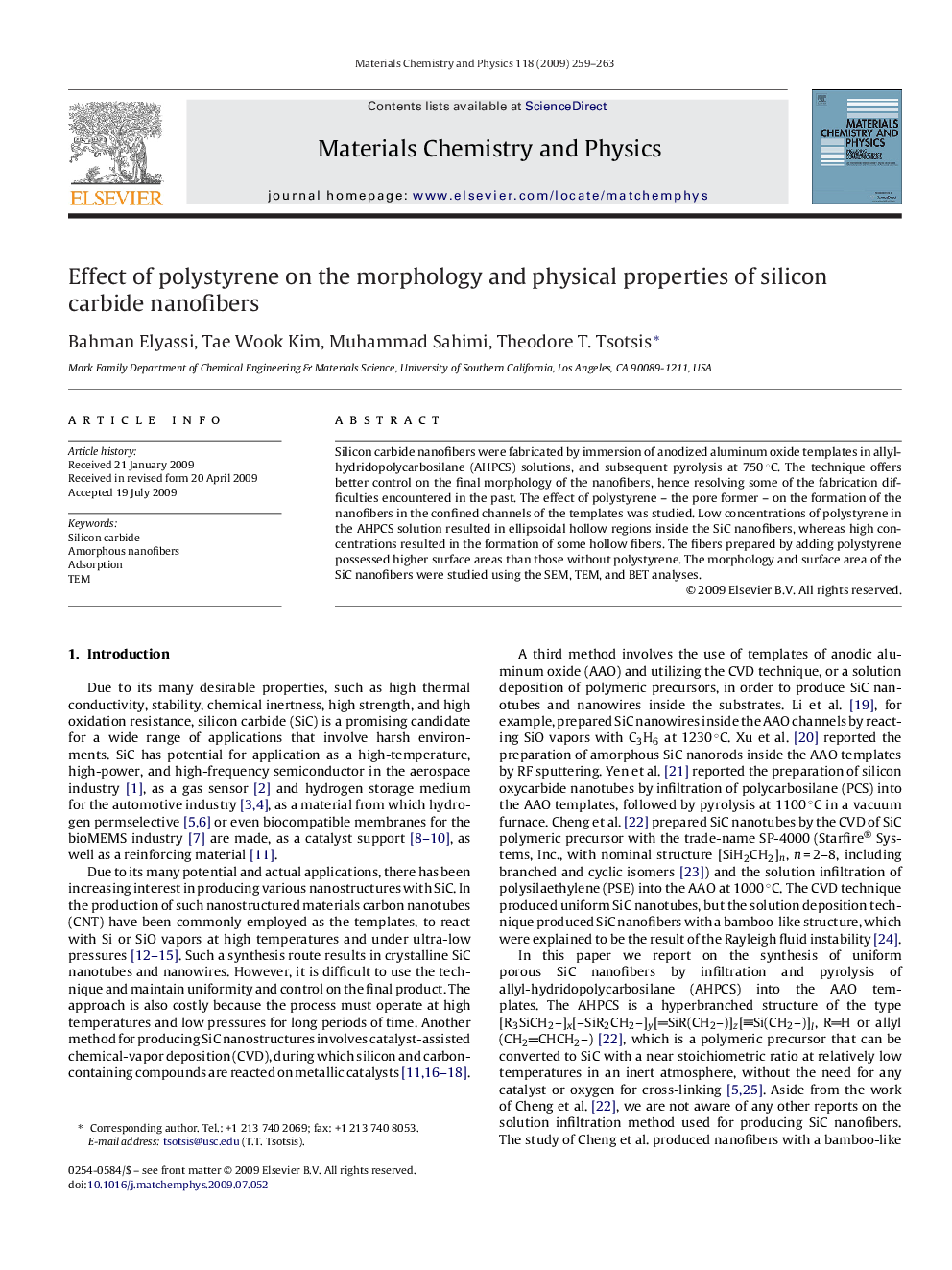| Article ID | Journal | Published Year | Pages | File Type |
|---|---|---|---|---|
| 1525687 | Materials Chemistry and Physics | 2009 | 5 Pages |
Silicon carbide nanofibers were fabricated by immersion of anodized aluminum oxide templates in allyl-hydridopolycarbosilane (AHPCS) solutions, and subsequent pyrolysis at 750 °C. The technique offers better control on the final morphology of the nanofibers, hence resolving some of the fabrication difficulties encountered in the past. The effect of polystyrene – the pore former – on the formation of the nanofibers in the confined channels of the templates was studied. Low concentrations of polystyrene in the AHPCS solution resulted in ellipsoidal hollow regions inside the SiC nanofibers, whereas high concentrations resulted in the formation of some hollow fibers. The fibers prepared by adding polystyrene possessed higher surface areas than those without polystyrene. The morphology and surface area of the SiC nanofibers were studied using the SEM, TEM, and BET analyses.
